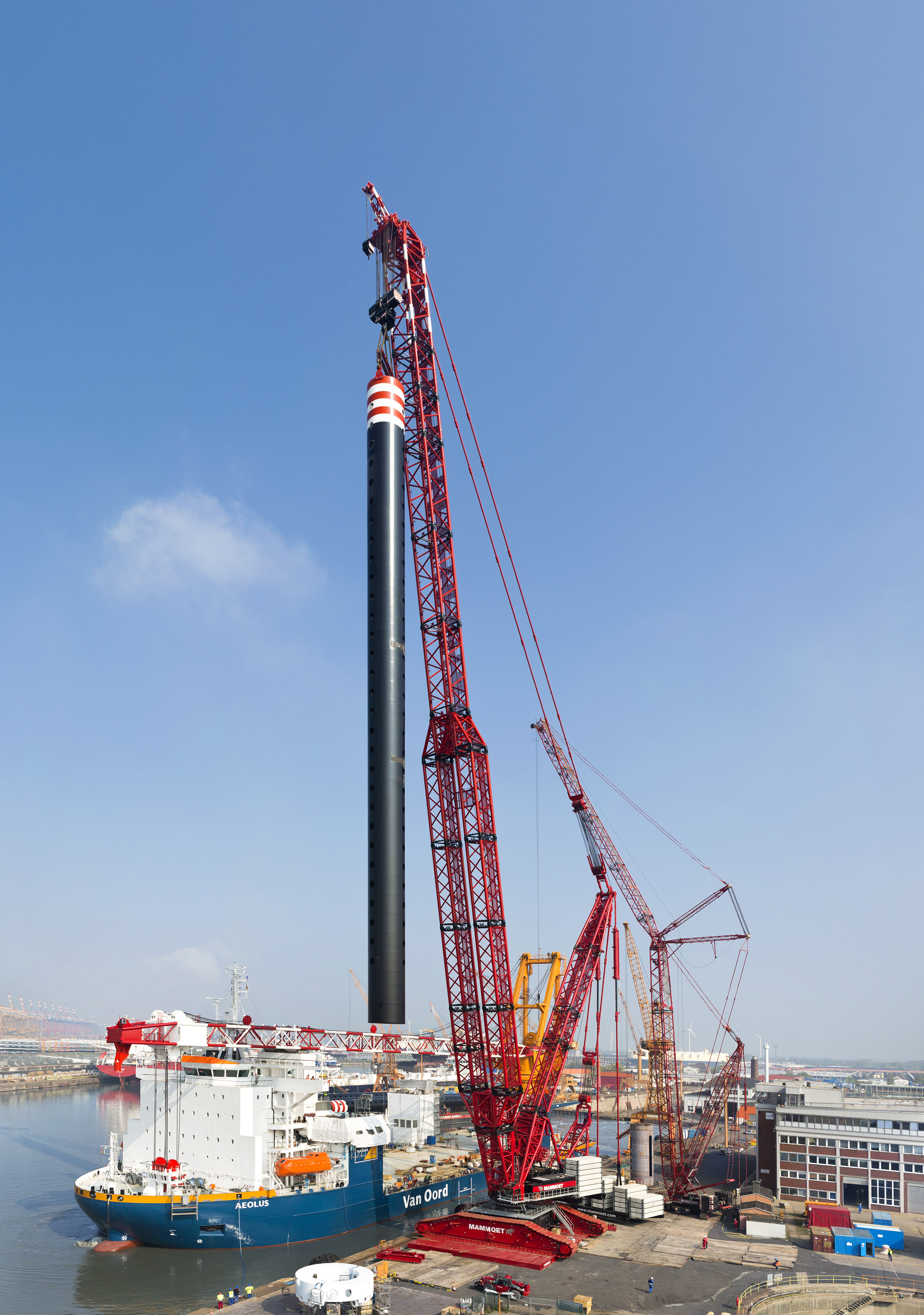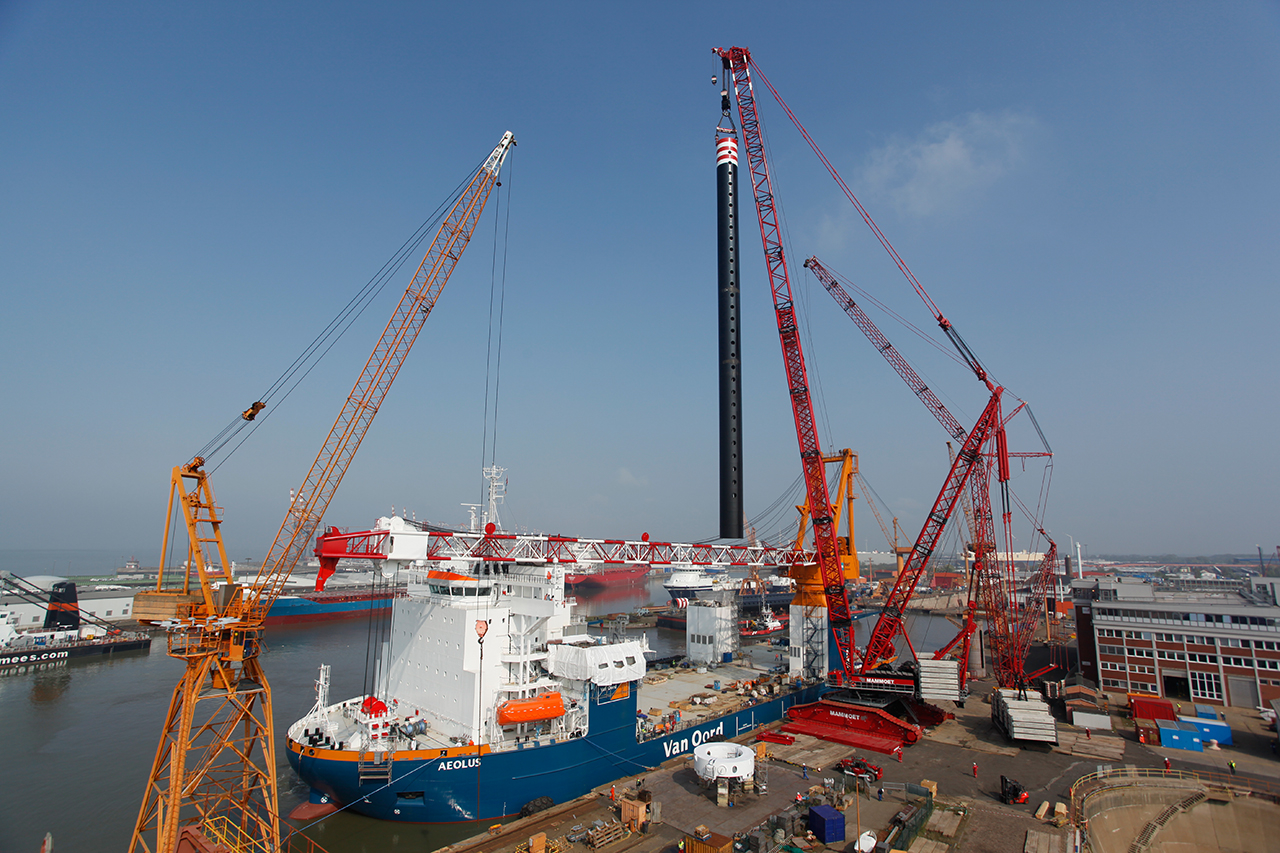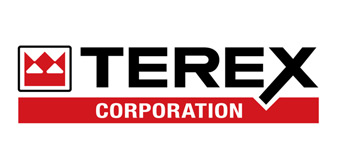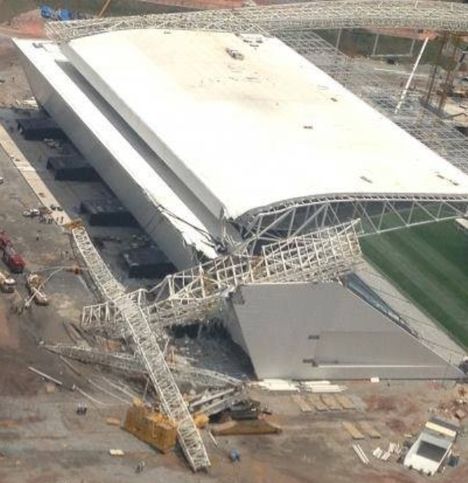Mammoet has used the 3000t Liebherr LR 13000 crawler crane on the installation of legs of the 940t 87m long Aeolus jack-up vessel. The parallel boom of the LR 13000, referred to as PowerBoom was used for this for the first time on the job in Bremerhaven, Germany.
The vessel had been towed to Bremerhaven in order for the four jack-up legs to be installed. The job was the first time the LR 13000 had been equipped with the PowerBoom. This means the double lattice mast booms extend over a length of 48m in parallel to one another. The function is designed to give the crane greater stability and increase the load capacity by about 50% compared to the standard boom, out to a reach of about 35m.
The work on the jack-up vessel started with what the manufacturer described as the most technically challenging lift. The first leg had to be installed through the structure of the heavy-load crane on the “Aeolus”. Together with a floating crane, Matador 3, the LR 13000 lifted the steel tube off its transport barge, aligned it vertically and transferred it all the way across. With its 65t hook block and fastening equipment the crawler crane was lifting a gross load of more than 1000t at a reach of 23m.
Using large pulley blocks, the pipe was turned into the correct position whilst being lowered. Mammoet had a hydraulic fastening system developed especially for this order. Once the stilts had been installed, the “spud cans” were fitted; these huge feet were intended to allow the working vessel to stand securely on the seabed later on. These elements weigh 180t and were lowered onto the base of the dock basin before the ship was positioned over them. Industrial divers then secured the feet to the bottom ends of the pipes using fastening equipment pulled upwards by the crawler crane through the jack-up legs.






